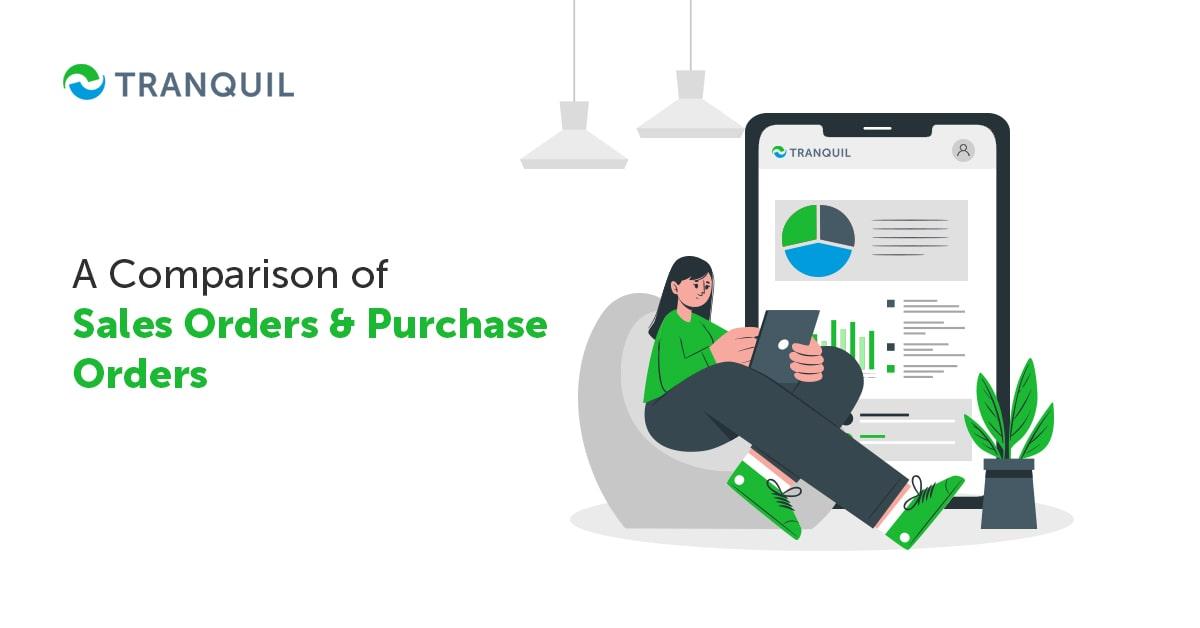
Online shopping was anyway becoming popular with people when along came the pandemic and the associated restrictions, making it not just convenient, but also necessary.
Anyone with an internet connection has shopped online at least once.
Whenever you purchase something online, the customer gets an email from the seller confirming your order, as well as an invoice and shipping information.
A similar process is followed when businesses purchase goods or raw materials for their operations.
The company buying the goods creates a purchase order, requesting goods required from a supplier, who in turn creates a sales order which is a receipt listing the goods.
Sales and purchase orders are used by almost every business that buys and sells products and/or raw materials.
Both are interdependent on each other.
While both contain essentially the same information, they are different – and knowing this difference will help you maintain a smooth procurement process to keep the business organized.
The relationship between sales and purchase orders is defined by their differences.
The differences between a sales order and a purchase order define the relationship between them.
Before we delve into these matters, let us clearly understand what exactly a sales order and a purchase order are, how they are similar, and how they differ.

A purchase order is a document sent to a vendor whenever your company needs to make a purchase – whether it’s for furniture, stationery, or inventory.
Normally, an internal discussion is held by the company to finalize the exact requirement to be sent to the vendor.
Before it is actually sent, authorized personnel need to approve the purchase requisition.
You could say that it contains an agreement between a company and a vendor that helps in tracking and controlling orders over the long term.
One of the last steps in a purchase workflow is the sending of a purchase order; this becomes legally binding on both parties once the supplier agrees and confirms the order.
It includes all details of transactions from one vendor, like:
A Purchase Order is a contract that necessitates the buyer to accept the delivery of products as per the order, considering that all agreement terms are fulfilled. The buyer then has to fulfill the terms of payment as mentioned in the Purchase Order.
P.O can be either electronic or paper-based; electronic purchase orders make the process more seamless, simplifying order tracking, payment processing, and accessing of reports.
While large businesses negotiate contracts with suppliers, small businesses depend on upfront purchasing transactions.
Large businesses are in a better position to lock terms and other specifications in the purchase orders, eliminating the necessity of negotiating during every purchase.
This also helps to protect the business from sudden market price fluctuations.
All purchase orders are filled, and this can help when you need to check the cost for budgeting, especially when you place recurring orders with the same vendor.
It suits the vendor as they have a clear picture of what to expect over the long term, allowing them to leverage market conditions to purchase raw materials when prices are low, scheduling employees to maximize productivity rather than producing one-time orders with a short turnaround, and so on.
The supplier is also aware of how and when he will get his payment, as it is specified in the invoice using the purchase order as a reference.
ALSO READ: How to Choose an ERP Software to Enhance your Purchase Management?

A sales order is a document issued by a vendor or service provider to a buyer – in both B2B and B2C companies.
Usually, it is issued when the buyer makes the payment, but it can also be issued when credit purchases are made.
A sales order is typically triggered by the receipt of a purchase order, and it can be created in different ways.
It’s a commercial order created by the seller and issued to the purchaser.
In all these cases, sales happen, and money changes hands – but they are not purchased orders.
Sales orders typically contain this information:
Efficient ERP systems like Tranquil have robust procurement management modules that automate the entire process end-to-end, eliminating human error, and saving time and money while increasing efficiency.
A sales order is a binding document that is vital in any supply chain management system.
Whenever a purchaser issues a purchase order, it is the vendor’s responsibility to fulfill the order – and this can become complex when you deal with a large company.
Products may need to be delivered at different locations or dates, and in varying quantities, etc.
Sales orders help to obtain relevant details from purchase orders for individual orders to make sure that orders are completed correctly.
A sales order also helps to ensure that the seller’s inventory is on time and up-to-date.
On fulfillment of the sales order, an invoice is generated based on the information in the SO by the Accounts Department, and sent to the buyer.
ALSO READ: Route and Van Sales – Challenges and Opportunities
A lot of the information in both documents is the same, and it’s not unusual for people to get confused between the two.
Both sales and purchase order processing happens when a purchaser places an order to buy products or services.
They are both connected to the purchase process.
While they appear to be similar, there are some vital differences.
ALSO READ: What is Negative Inventory and How Can you Prevent it?
Let’s take a look:
ALSO READ: What is Batch Tracking?

ALSO READ: Important ERP Modules and Functions
Vendors who carefully fill all the purchase orders received and sales orders sent, and track these transactions, will be able to project their earnings efficiently.
Systematic filling of all such documents will help you manage and control your daily operations and business overall more effectively.
It is easy to get confused with financial terms; however, an in-depth understanding of supply chain terminology is important to be competent and stay relevant as well as for developing trustworthy relationships with partners, vendors, and other stakeholders. Being well-versed in the differences between important commercial documents is just one part of it. To manage it all seamlessly, you need a robust software application like Tranquil. If you are unsure how it will help your business, do schedule a demo with us at a time of your convenience, and we will be happy to show you how it works, and answer all your queries.